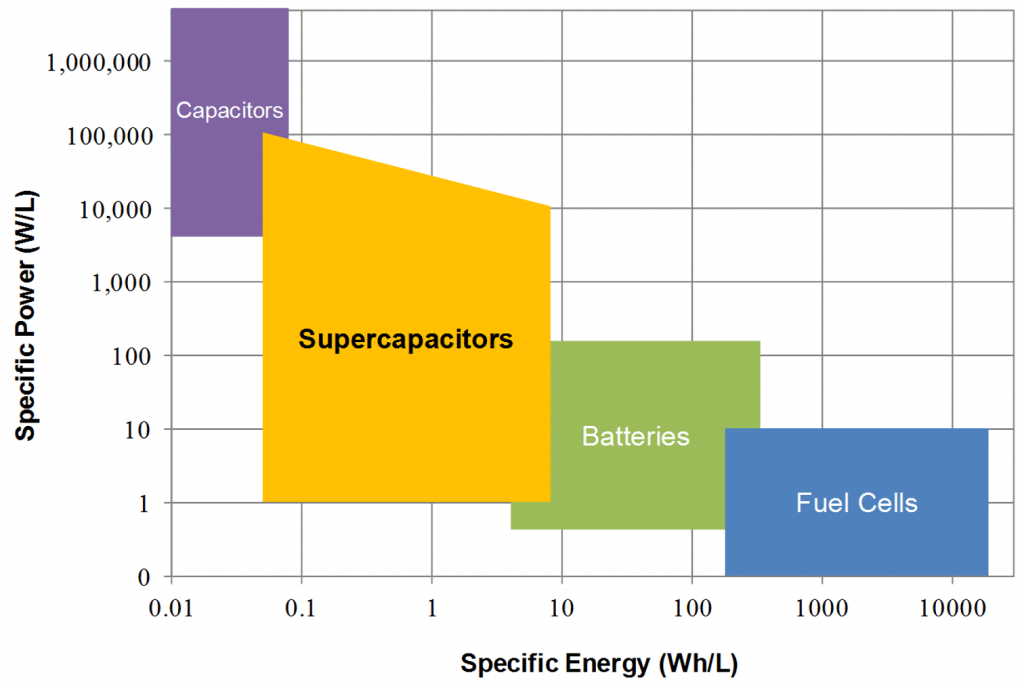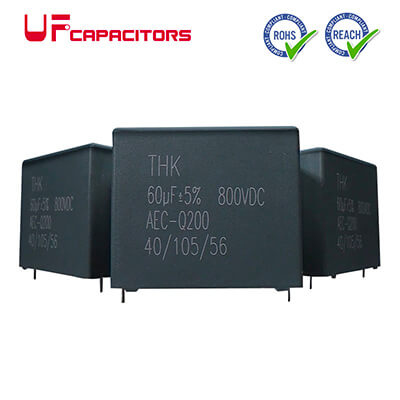The rapid advancements in technology have led to a growing demand for efficient energy storage solutions that can cater to an increasingly electrified world. Two contenders that often find themselves at the center of this debate are supercapacitors and batteries. These energy storage systems, while sharing the common goal of storing and releasing energy, exhibit distinct characteristics that make them suitable for various applications. This essay delves into the intricacies of the supercapacitor versus battery discourse, analyzing their strengths, weaknesses, and potential avenues for synergy.
Energy density supercapacitor vs battery
Energy density is a critical factor when comparing supercapacitors and batteries. It essentially measures how much energy a storage system can hold per unit of volume or mass. Both supercapacitors and batteries have their own strengths and weaknesses in terms of energy density, which impacts their suitability for different applications.
Supercapacitors:
Supercapacitors, also known as ultracapacitors or electric double-layer capacitors (EDLCs), have relatively lower energy density compared to batteries. They store energy through the separation of charges at the interface of an electrode and an electrolyte, creating an electrostatic field. This mechanism allows for rapid charge and discharge cycles, making supercapacitors ideal for applications requiring quick bursts of power or high-power density.
However, due to their electrostatic nature, supercapacitors have limitations in terms of the total amount of energy they can store. This restricts their use in applications that demand prolonged energy supply, such as electric vehicles needing longer ranges or devices requiring extended operation between charges.
Batteries:
Batteries, which encompass a wide range of chemistries like lithium-ion, lead-acid, nickel-cadmium, and more, offer significantly higher energy density compared to supercapacitors. They store energy through chemical reactions, allowing them to pack a substantial amount of energy into a smaller volume or mass. This makes batteries well-suited for applications requiring sustained and continuous power delivery, such as smartphones, laptops, electric vehicles, and renewable energy storage systems.

The higher energy density of batteries enables devices to operate for longer periods without needing frequent recharges. However, this advantage comes with trade-offs, including longer charging times and potentially lower power density, which can affect applications requiring rapid power delivery.
Are supercapacitors better than batteries
Whether supercapacitors are better than batteries or not depends on the specific application and the requirements of the energy storage system. Supercapacitors and batteries each have their own set of advantages and limitations, which make them suitable for different scenarios. Let’s explore both sides to better understand when one might be preferred over the other:
Advantages of Supercapacitors:
- Fast Charging and Discharging: Supercapacitors can charge and discharge rapidly, making them ideal for applications that require quick bursts of power, such as regenerative braking in vehicles or smoothing out sudden power spikes in industrial settings.
- High Power Density: Supercapacitors can deliver high power output in a short amount of time. This is advantageous in applications where rapid energy transfer is crucial.
- Long Cycle Life: Supercapacitors generally have a longer cycle life compared to batteries. They can endure a larger number of charge and discharge cycles without significant degradation.
- Low Maintenance: Due to their electrostatic energy storage mechanism, supercapacitors do not involve chemical reactions, resulting in less wear and tear and lower maintenance requirements.
Advantages of Batteries:
- Higher Energy Density: Batteries typically have higher energy density compared to supercapacitors, allowing them to store more energy for longer durations. This makes batteries suitable for applications requiring sustained power supply over extended periods.
- Longer Energy Release: Batteries can provide a consistent energy output over time, which is advantageous for devices that require continuous operation, like smartphones, laptops, and electric vehicles.
- Varied Chemistries: Batteries come in various chemistries (e.g., lithium-ion, lead-acid, nickel-metal hydride), each tailored for different applications. This versatility allows batteries to meet specific requirements more effectively.
- Energy Storage: Batteries are well-suited for energy storage applications, such as grid-level storage of renewable energy, where the stored energy can be used during periods of high demand.
Choosing the Right Technology:
Selecting between supercapacitors and batteries depends on the application’s requirements. For instance:
- Supercapacitors are preferable when rapid energy transfer and high-power delivery are essential, like in regenerative braking systems in vehicles or quick energy buffering in renewable energy systems.
- Batteries are more suitable for applications that require long-lasting energy supply, such as electric vehicles needing extended ranges, uninterruptible power supplies (UPS), and powering portable electronic devices.
In some cases, hybrid systems that combine the strengths of both technologies are being explored. Such systems could offer the best of both worlds, providing rapid power delivery and sustained energy storage.
Charging and Discharging Dynamics
The differing charging and discharging dynamics of supercapacitors and batteries contribute to their divergent applications. Supercapacitors, due to their unique electrostatic mechanism, have the ability to charge and discharge almost instantaneously. This feature is crucial in applications where rapid energy transfer is essential, like smoothing out power fluctuations in renewable energy systems. Batteries, while comparatively slower in charging and discharging, offer a sustained release of energy, making them suitable for powering electronic devices, electric vehicles, and providing backup power.
Cycle Life and Durability
Cycle life, the number of charge and discharge cycles an energy storage system can endure before its performance degrades significantly, is a key determinant of longevity. Supercapacitors excel in this aspect, boasting an impressive cycle life that often surpasses batteries. The absence of chemical reactions during energy storage and release contributes to their durability. Batteries, on the other hand, are susceptible to degradation over time due to chemical processes involved in energy exchange, making them less durable in comparison.
Environmental Impact and Sustainability
In the quest for sustainable energy solutions, evaluating the environmental impact of energy storage technologies is paramount. Batteries often involve complex manufacturing processes and the use of potentially harmful materials, leading to concerns about their ecological footprint. Supercapacitors, in contrast, typically involve simpler production processes and can utilize more environmentally friendly materials, making them potentially more sustainable options.
Synergy and Future Prospects
Rather than viewing supercapacitors and batteries as competitors, there’s a growing interest in exploring their synergy. Combining their strengths could lead to hybrid energy storage systems that offer the best of both worlds – rapid energy bursts and sustained power delivery. For instance, using supercapacitors in conjunction with batteries can optimize energy management in electric vehicles, enhancing acceleration and regenerative braking while maintaining sufficient range.
Are supercapacitors the future
The debate surrounding supercapacitors and batteries reflects the nuanced nature of energy storage technologies. Each has distinct attributes that suit specific applications, highlighting the need for a comprehensive understanding of their capabilities. While supercapacitors excel in rapid power delivery and durability, batteries offer higher energy density and sustained output. Instead of an outright battle, envisioning a future where these technologies complement each other to address diverse energy storage requirements is a promising prospect. As technology continues to evolve, finding the optimal balance between supercapacitors and batteries will undoubtedly shape the energy landscape for years to come.




